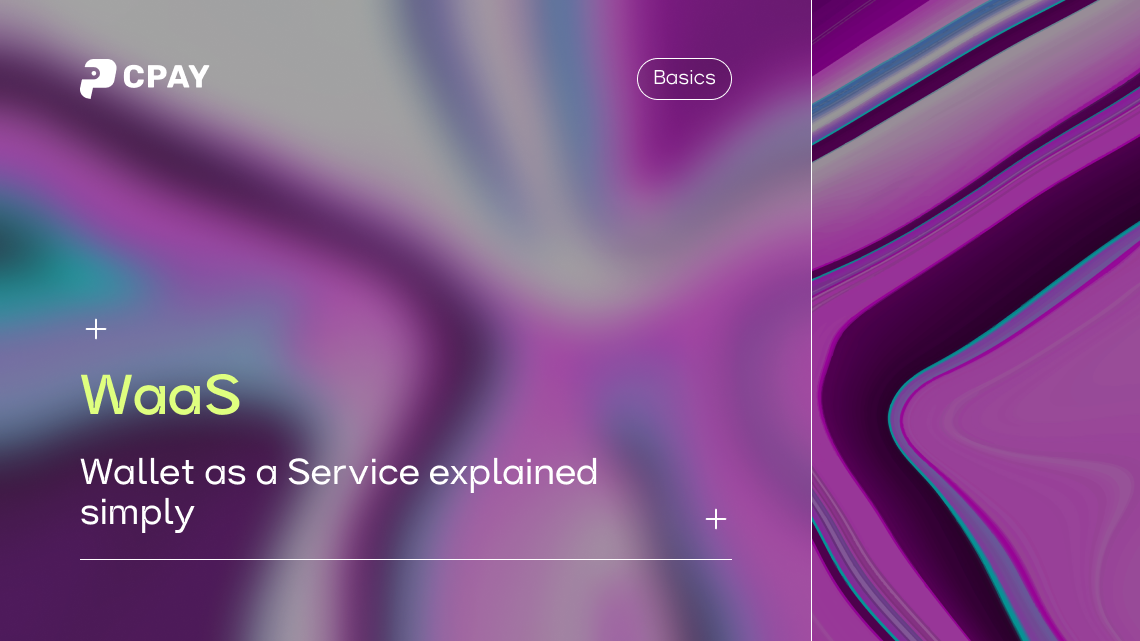The CPAY Wallets solution offers secure, scalable, and multi-functional infrastructure for businesses and institutions to manage, store, and transfer cryptocurrencies. With the CPAY WaaS (Wallet-as-a-Service) solution, users can integrate crypto wallet infrastructure into their platforms, offering end-users the ability to interact with crypto assets.
In this guide, we’ll walk you through the steps required to integrate CPAY wallets into your system, covering API key generation, wallet creation, internal transfers, withdrawal processes, and fees.
Step-by-Step Process for CPAY Wallet Integration
1. Obtain API Keys and Token:
The first step in integrating CPAY wallets is to obtain API keys from your merchant settings in the CPAY dashboard. These API keys allow you to authenticate and interact with the CPAY API.
To begin working with the API, you’ll need to generate an authentication token by sending a POST request with your API keys to the authentication endpoint. You can find detailed instructions for this process here.
2. Creating Client Wallets:
After obtaining your authentication token, you can proceed to create client wallets. These wallets are used to manage individual virtual balances for your customers. They do not hold real funds but reflect balances corresponding to the merchant wallet, where actual assets are stored.
To create a client wallet, you will send a POST request to the wallet creation endpoint, specifying the client’s details (such as client ID). The full procedure for creating client wallets is outlined here.
3. Client Wallets vs. Merchant Wallets:
It’s essential to understand the difference between merchant wallets and client wallets:
- Merchant Wallets: These hold real cryptocurrency assets and are used for deposits and withdrawals.
- Client Wallets: Virtual wallets assigned to individual clients, reflecting balances backed by the merchant wallet. When funds are withdrawn, they are first transferred from the merchant wallet to the client wallet before reaching the final destination.
In most use cases, you’ll primarily work with client wallets to manage user balances.
4. Logging into Client Wallets:
Before initiating any transaction or withdrawal from a client wallet, you need to log in to the wallet using the client’s credentials. This will generate a token specific to the wallet, which can be used for further actions.
Detailed instructions for logging in to client wallets are available here.
5. Withdrawing Funds from Client Wallets:
Once logged in to the client wallet, you can initiate withdrawals. The withdrawal process involves:
- Transferring the requested amount from the merchant wallet to the client wallet.
- Initiating the withdrawal from the client wallet to the external address (e.g., a crypto wallet or exchange).
The API request for withdrawals, including parameters and responses, is described here.
6. Internal Transfers Between Client Wallets:
CPAY provides the ability to transfer funds internally between client wallets without interacting with the blockchain. This allows for fast, cost-efficient fund transfers within your ecosystem.
You can set up internal transfers by using the API endpoint found here. This feature is particularly beneficial for applications that require fast fund movement between multiple client accounts.
7. Additional Wallet Features:
CPAY’s wallet solution offers a range of additional features to enhance the user experience, including:
- Transaction History: Retrieve detailed transaction logs for both client and merchant wallets.
- Real-Time Balance Checking: View the balance of any client or merchant wallet instantly.
- Deposit and Withdrawal Limits: Set and enforce transaction limits to manage risks.
- Notifications: Enable notifications for important wallet activities such as deposits, withdrawals, and transfers.
More details on these features can be found here.
Fees in CPAY Wallets:
There are several types of fees involved when using CPAY wallets:
- Miner Fee: This network fee varies depending on the blockchain's load and the transaction amount. It’s paid directly to the network to process blockchain transactions and is not a CPAY fee. Merchants can choose whether the Miner Fee is paid by the customer or the merchant. If the customer pays, the client's wallet balance will reflect this deduction. For example, if a user deposits 0.1 ETH and the customer pays the fee, their balance may show 0.09976 ETH.
- Merchant Fee: This is a fee set by the merchant to earn on client deposits. The client wallet's balance is updated after the Merchant Fee is deducted. For instance, if a user deposits 0.1 ETH and the Merchant Fee is 10%, the user’s balance would be updated to 0.09 ETH.
- System Fee: CPAY charges a commission on withdrawals and transfers from client wallets to merchant wallets. This System Fee is 1% of the transaction amount, with an additional 0.1% fee applied for withdrawals from the merchant wallet. The System Fee is automatically transferred from the merchant’s wallet to CPAY’s System Fee wallet after each transaction.
Key Benefits of CPAY Wallets:
- Security: The use of Multi-Party Computation (MPC) ensures that no single entity has full control over private keys, significantly enhancing the security of your funds.
- Flexibility: CPAY wallets support a wide range of cryptocurrencies and are designed for both individual users and businesses, allowing for seamless integration into any platform.
- White-Label Solutions: Businesses can use CPAY’s wallet infrastructure to offer their own branded wallet solutions to clients without developing the technology from scratch.
Conclusion:
By integrating CPAY wallets into your platform, you gain access to a secure, transparent, and scalable crypto wallet infrastructure that offers flexible solutions for cryptocurrency payments, asset management, and transfers. Whether you need to create client wallets, facilitate withdrawals, or manage internal fund transfers, CPAY provides all the tools you need to streamline your operations.
If you’re ready to start integrating CPAY wallets, follow the steps outlined in this guide and refer to the official CPAY documentation for more in-depth technical details. With its wide array of features and comprehensive API, CPAY wallets are a powerful solution for businesses and developers alike.








